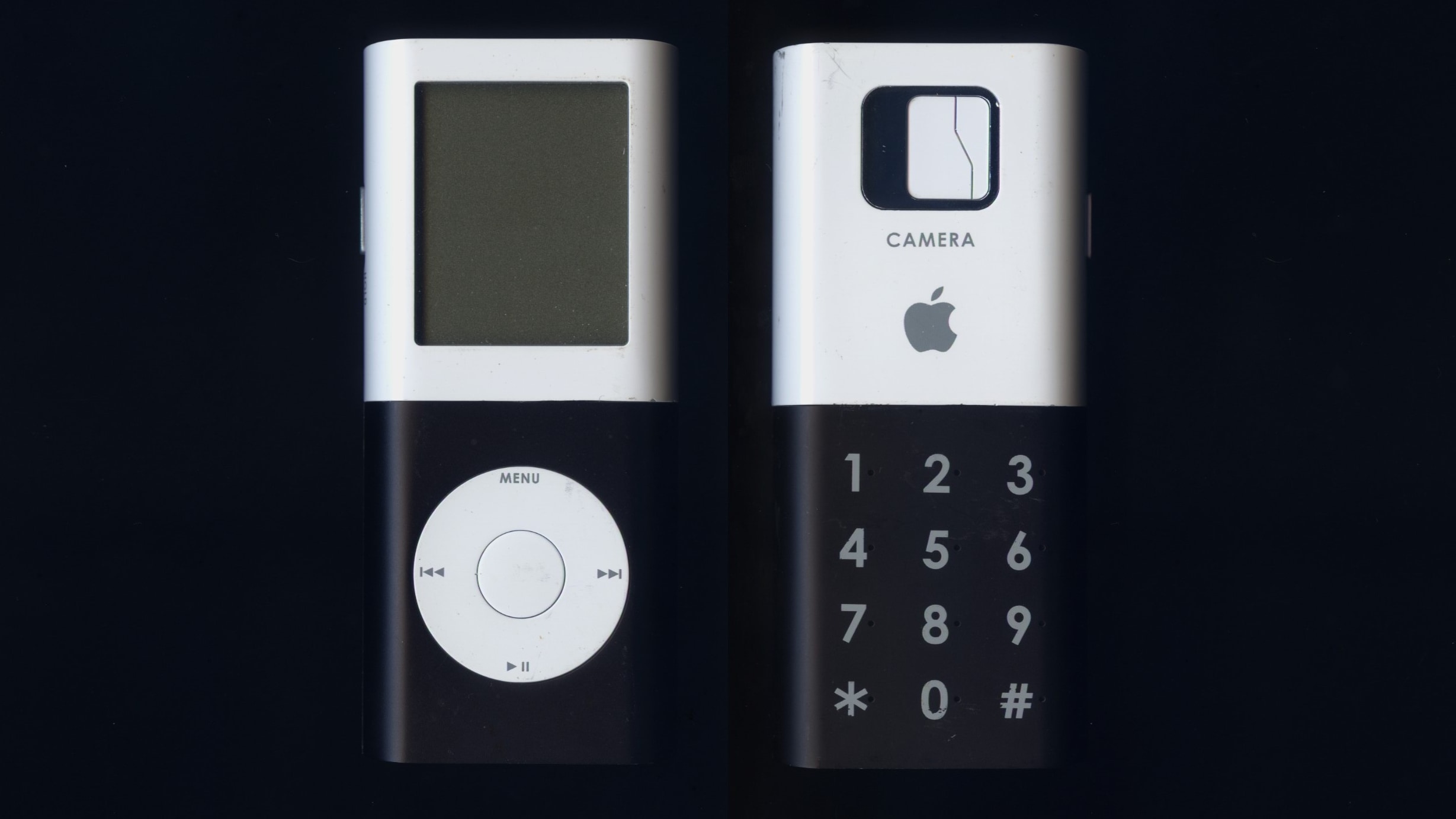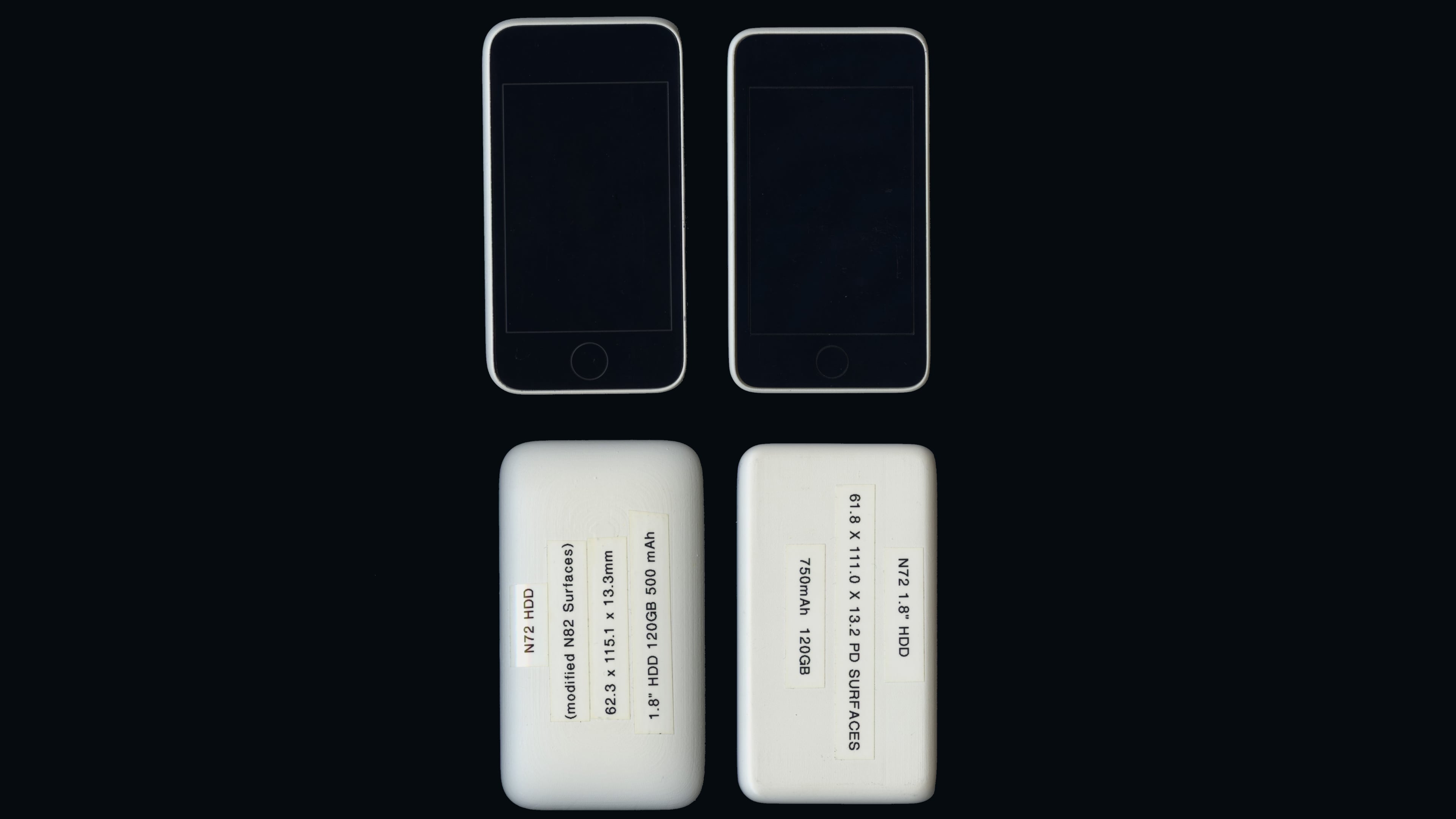Former Apple exec Tony Fadell reflects on how Steve Jobs originally wanted to develop an iPhone by using an iPod as a basis, so the team came up with so-called “iPod iPhone” which used a click wheel that could become a number pad.

- Steve Jobs wanted to bank on the iPod’s popularity by creating a music player with phone functionality and a click wheel that could turn into a number pad.
- Tony Fadell’s team went to the drawing board, creating an early prototype that used a click wheel for navigation and even had a camera.
- After he was proved wrong, Jobs refocused Apple’s energies on creating a completely new device that would become the iPhone.
Good thing Apple never shipped this Frankenstein phone
During the early days of iPhone development, Apple approached the project from multiple angles. Never shying away from trying new things, Apple tasked the iPod “Godfather” Tony Fadell and his team with integrating the iconic click wheel.
The click wheel earned its fame on the iPod, Apple’s hit product at the time. Fadell was Apple’s vice president of the iPod division and Jobs thought it might be a good idea to give a yet-to-be-released smartphone a click wheel that could turn into a number pad. On top of that, it also had a built-in camera, TechCrunch reports.
Fadell’s new book, “Build: An Unorthodox Guide to Making Things Worth Making,” [iBooks link, Amazon link], is out later this week so TechCrunch thought it’d be a good idea to sit down with Fadell and discuss iPhone development.
Jobs had very clear views on things—until they weren’t clear. Or it became very clear that they wouldn’t work. He pushed us very hard on making the iPod Plus Phone work. We worked weeks and weeks to figure out how to do input with the click wheel. We couldn’t get it, and after the whole team was convinced we couldn’t do it, he was like, ‘keep trying!’ At some point we all said, ‘no, it isn’t going to work.’
Fadell says that the top and the bottom feature a swivel, letting the user interact either with a number pad or a click wheel/camera.
You took the headset, which had a microphone on it and the one ear thing. You could use the click wheel to select numbers and names, or you could dial with it, like a rotary phone, which was the ultimate death of it. You couldn’t enter anything, because there’s no textual input. But it was an iPod Classic with a phone in it. Walk it back from the third-party prototype, and we were there, too.
Jobs eventually relented and the rest is history.
iPod Plus prototypes would become the iPhone

Apple would go on to create a real smartphone that ran a desktop operating system (Mac OS X) and used a sophisticated multitouch user interface instead of a click wheel. Fadell would go on to work on the first three iPhone generations. He oversaw all iPhone hardware, firmware and accessories development from March 2006 to November 2008. Read: 10 free ways to send large videos and files from iPhone
The executive, who previously shared anecdotes on the rapid timeline of iPod development, would go on to found the smart home devices company Nest after leaving Apple, which would eventually get snapped up by Google. Fadell, who is now 53 years old, is convinced that the person who’s going to fix climate change will become the world’s first trillionaire. Read: How to read Amazon Kindle books for free